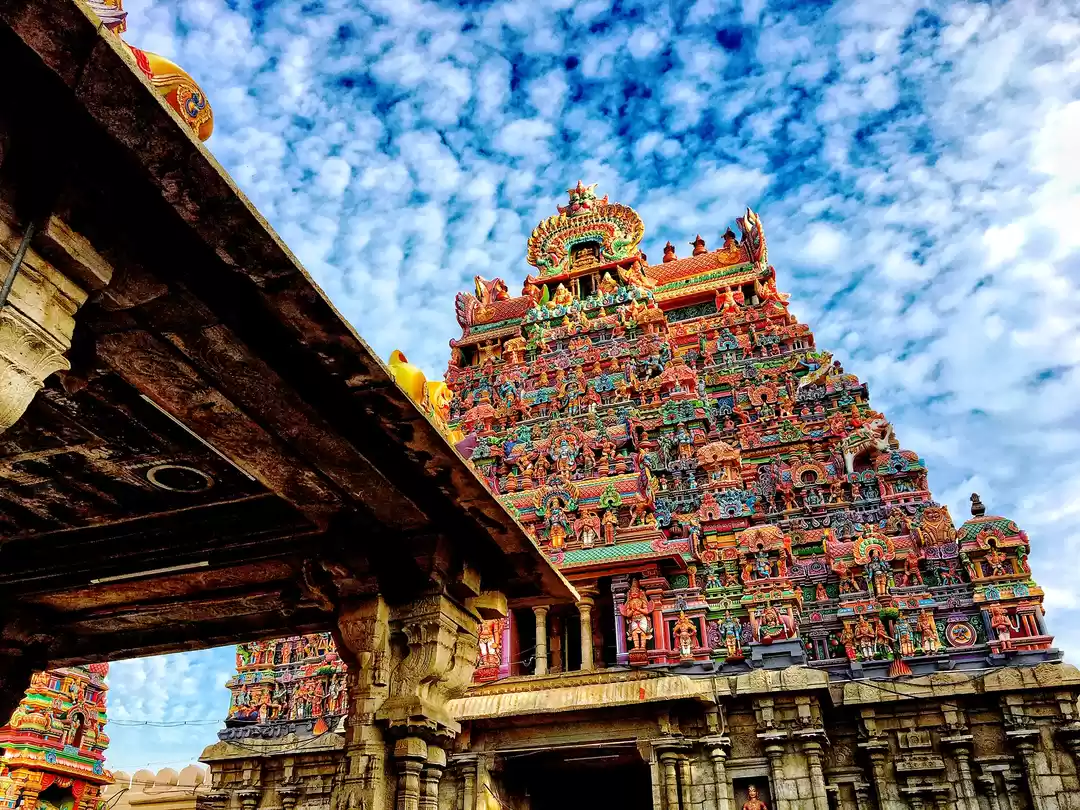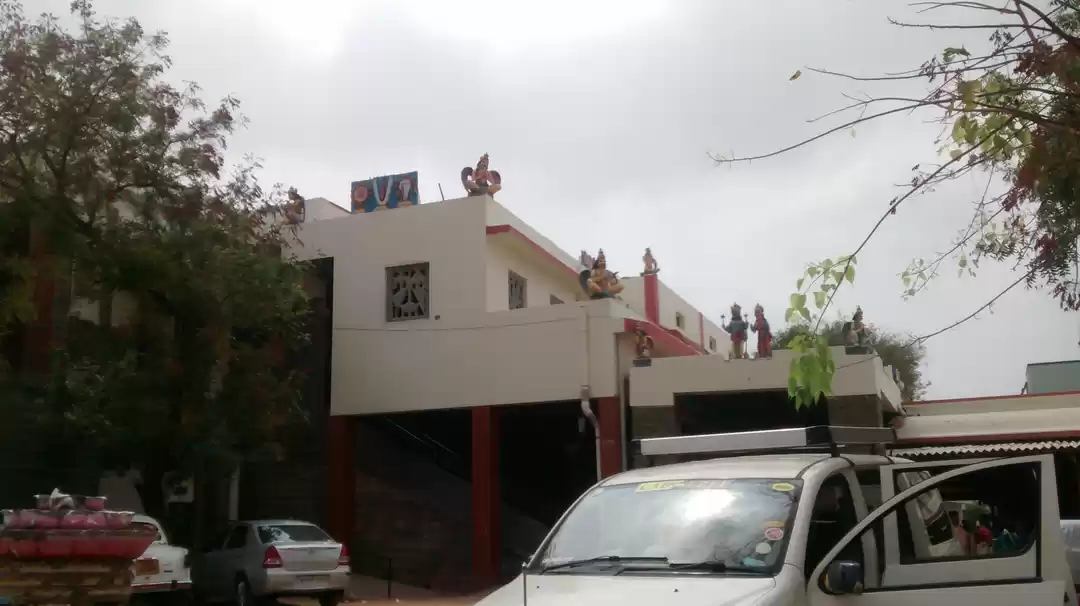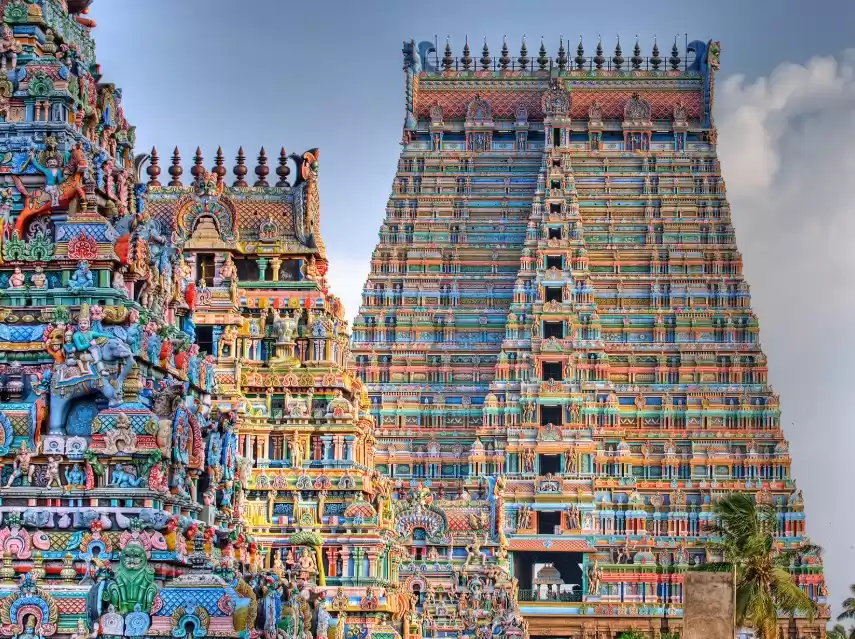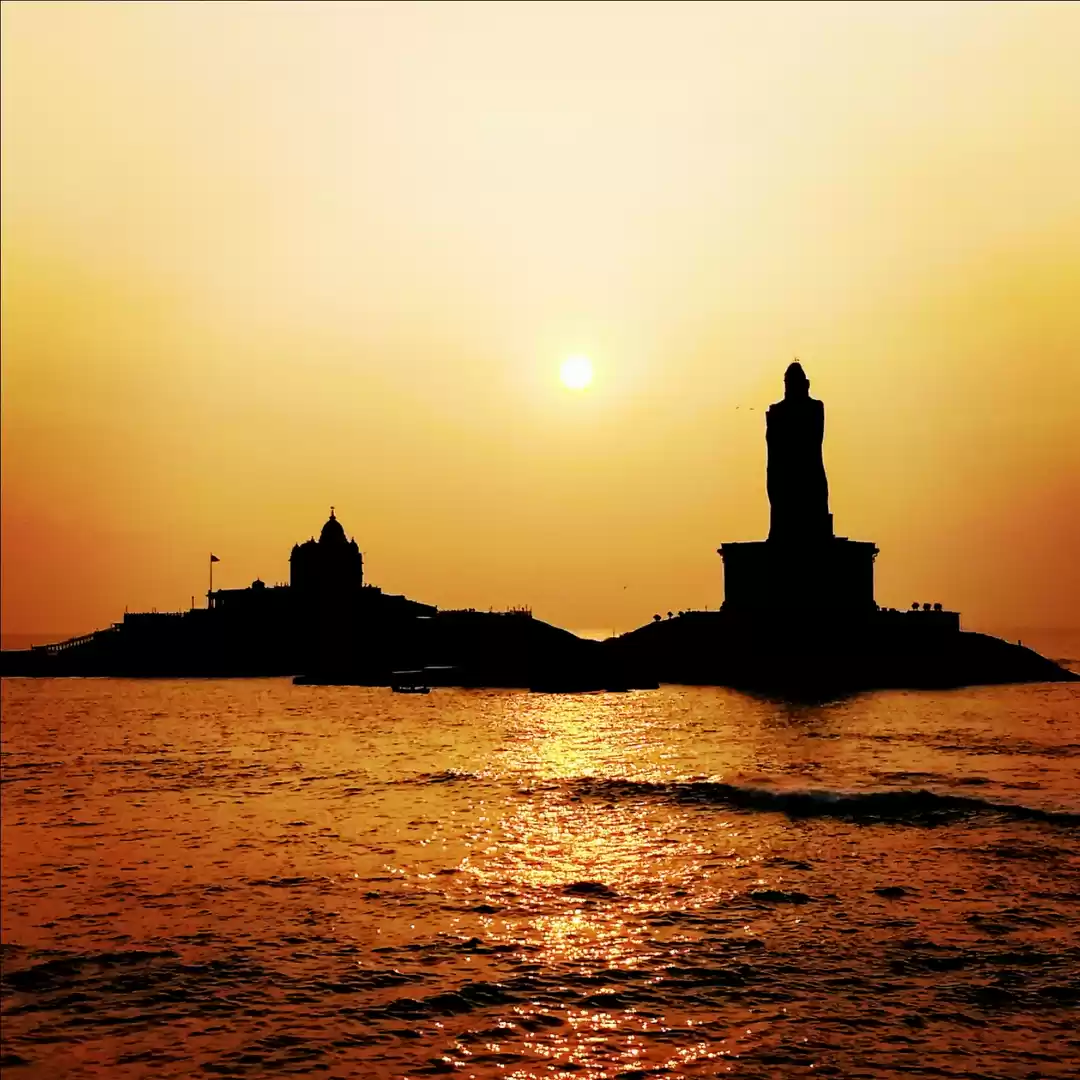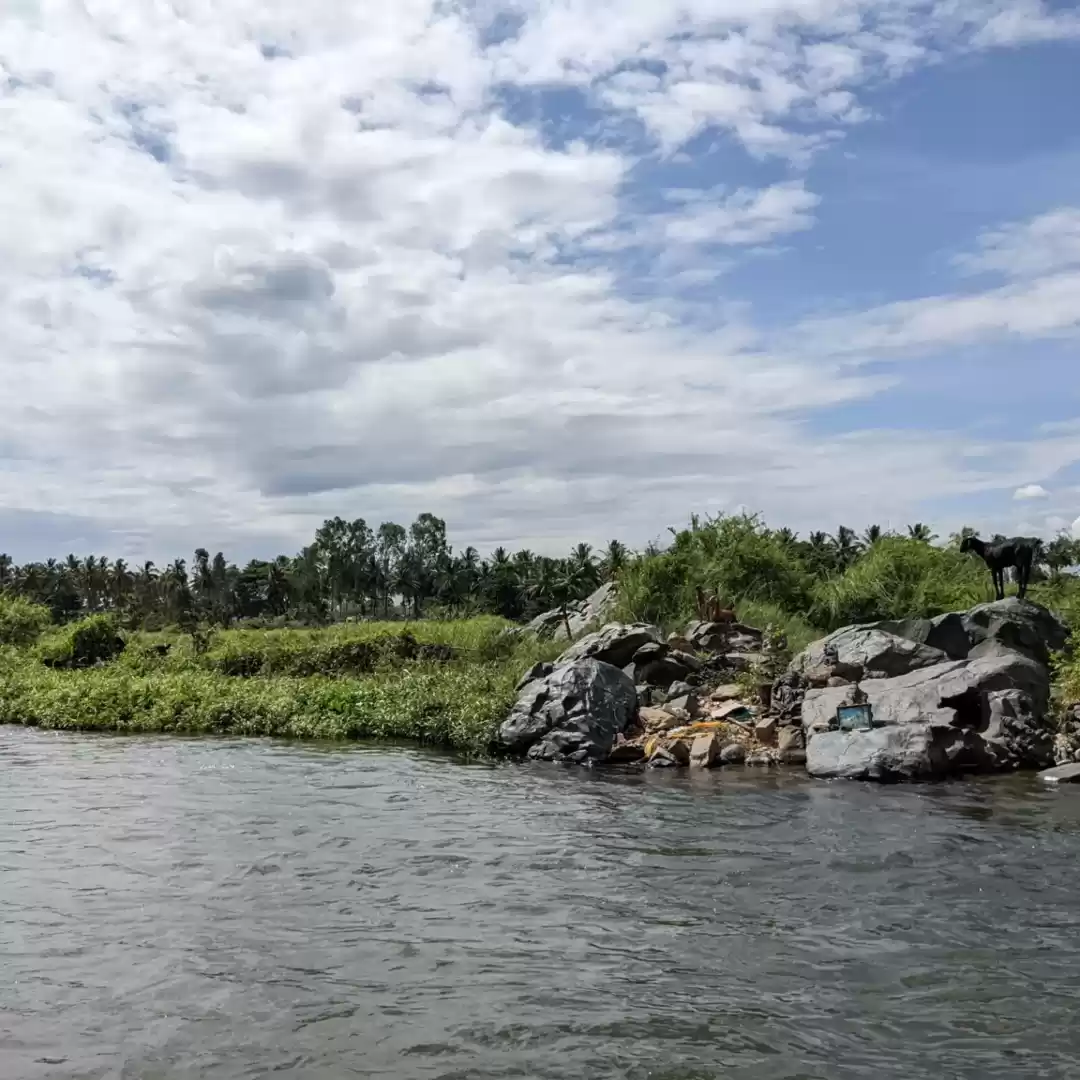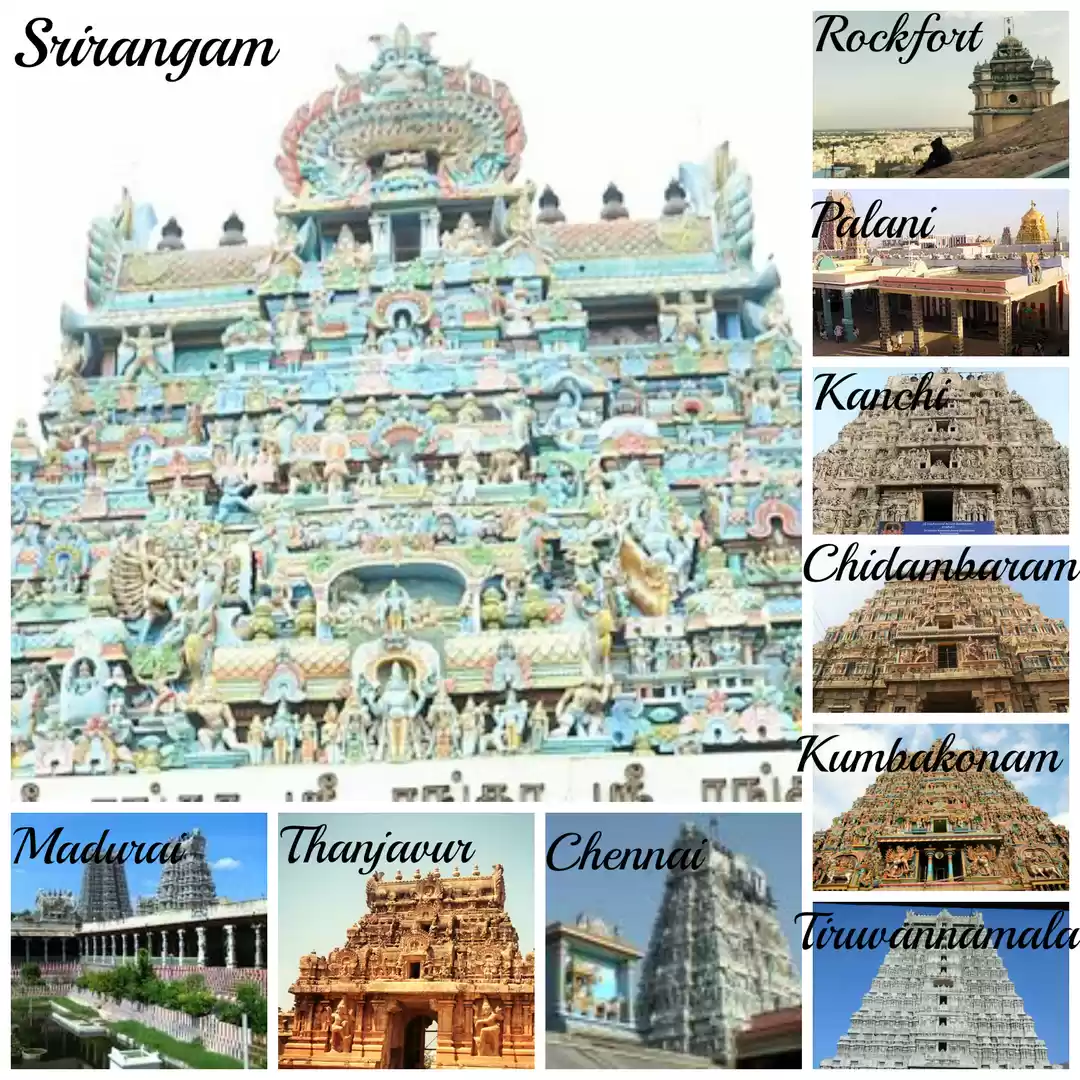Srirangam is a river island in the city of Tiruchirappalli, Tamilnadu, India. It is home to the world’s grandest operational Hindu shrine, the Srirangam Temple, dedicated to Lord Vishnu. But there is more to Srirangam than just the temple. It is a place where culture, history, and nature coexist in harmony. In this article, we will guide you through the best places to visit, the best time to go, the best things to do, and the best tips to plan your trip to Srirangam.
Srirangam Temple: The World’s Grandest Operational Hindu Shrine
The Srirangam Temple is the main attraction of Srirangam. It is one of the largest and most revered temples in India, and the foremost among the 108 Divya Desams, the holy abodes of Lord Vishnu. The temple is also known as Ranganathaswamy Temple, Thiruvarangam, or Periya Kovil (Big Temple).
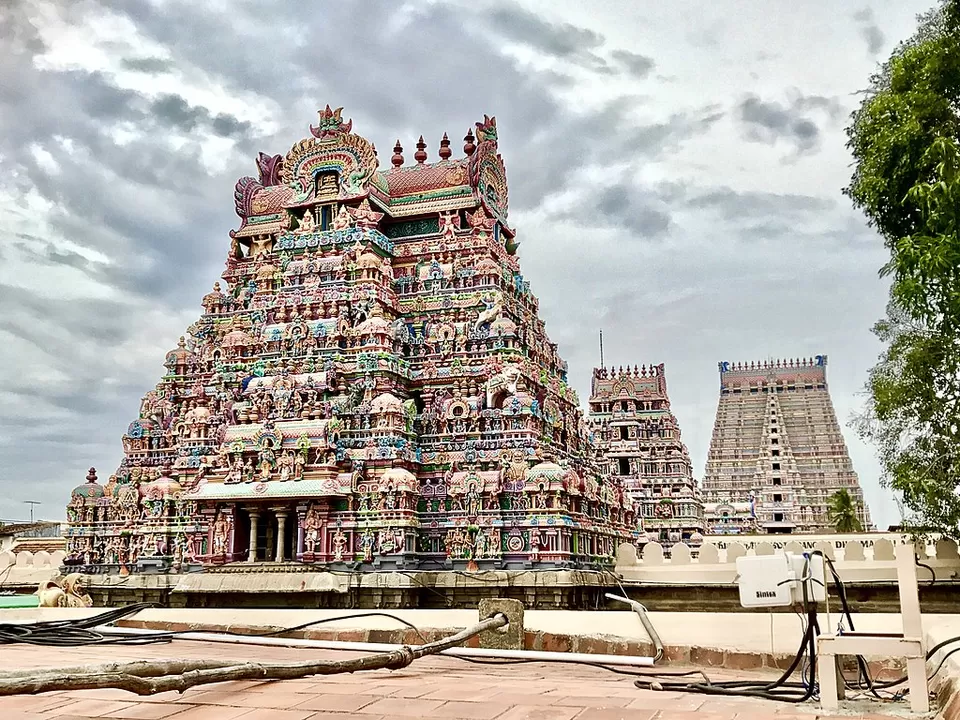
The temple is a colossal complex that spans over 156 acres, with seven concentric walls, 21 gopurams (towers), 50 sub shrines, and a gilded vimana (dome) over the sanctum sanctorum. The temple is a marvel of architecture, art, and engineering, with exquisite sculptures, fresco paintings, and intricate carvings. The temple is also rich in history and legends, dating back to the Ramayana era. The temple is the center of the Vaishnavite tradition, and has been patronized by various dynasties and saints over the centuries.
The temple is open from 6 am to 9 pm, with breaks in between. The timings of the special pujas and darshans are as follows:
Viswaroopa Seva: 6 am to 7.15 am
Pooja Time: 7.15 am to 9 am
General Darshan: 9 am to 12 pm
Pooja Time: 12 pm to 1.15 pm
General Darshan: 1.15 pm to 6 pm
Pooja Time: 6 pm to 6.45 pm
General Darshan: 6.45 pm to 9 pm
The entry fee for the temple is Rs. 50 for adults and Rs. 25 for children. The dress code for the temple is traditional attire, such as sarees, salwar kameez, dhotis, or kurta pyjamas. Photography is not allowed inside the temple, except for the outer walls and gopurams.
Some of the highlights of the temple are:
The Ranganathar Swamy Shrine: The main shrine of the temple, where the idol of Lord Ranganatha, a reclining form of Lord Vishnu, is worshipped. The idol is made of black stone and is about 6 meters long. The shrine is located inside the innermost wall, and can be accessed through a golden gate, which is opened only on special occasions.
The Ranganayaki Thayar Shrine: The shrine of Goddess Lakshmi, the consort of Lord Ranganatha, located in the second wall. The shrine is also known as Thayar Sannidhi, or the Mother’s Shrine, and is revered by the devotees as the mother of the universe.
The Garuda Mandapam: A hall with a huge statue of Garuda, the eagle mount of Lord Vishnu, located in the third wall. The hall is also known as the Hall of 1000 Pillars, as it has 953 pillars, each carved with different images of gods, goddesses, and mythical creatures.
The Thousand Pillared Hall: A hall with 1000 pillars, located in the fourth wall. The hall is used as a museum, where various artifacts, idols, paintings, and weapons related to the temple and its history are displayed.
The Rajagopuram: The tallest tower of the temple, located in the fifth wall. The tower is 236 feet high, and has 13 tiers. It was built by the Vijayanagara king Achyuta Deva Raya in the 16th century. The tower is adorned with intricate sculptures and colorful paintings, depicting various scenes from the Hindu epics and mythology.

Places to Visit in Srirangam: A List of Cultural, Historical, and Natural Attractions
Srirangam is not just about the temple. There are many other places to visit and explore in and around the island, that showcase the cultural, historical, and natural diversity of the region. Here are some of the places that you should not miss:

Samaypuram Mariamman Temple:
A spiritual site dedicated to Goddess Mariamman, the goddess of rain and fertility, located about 15 km from Srirangam. The temple is famous for its car festival and flower festival, held in March and April respectively, when thousands of devotees flock to the temple to offer their prayers and vows. The temple is also known for its healing powers, as many people believe that the goddess can cure diseases and ailments.

Rockfort Temple:
A historic temple complex on a hilltop, offering panoramic views of the city, located about 7 km from Srirangam. The temple complex consists of two temples, the Ucchi Pillayar Temple, dedicated to Lord Ganesha, and the Thayumanavar Temple, dedicated to Lord Shiva. The temple complex is also a witness to the history of Tiruchirappalli, as it has seen many battles and invasions by various rulers and armies.
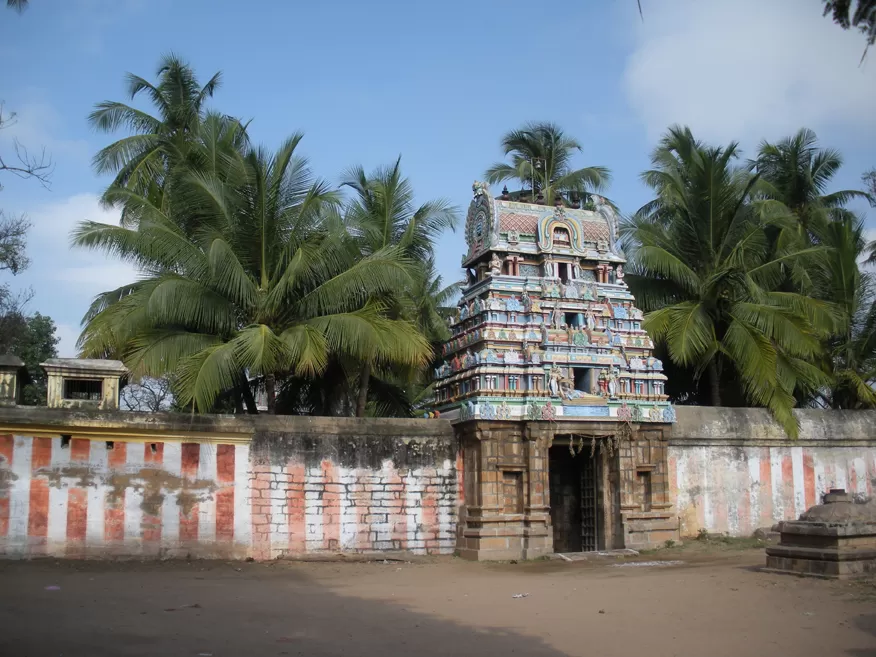
Sri Vadivazhagiya Nambi Perumal Temple:
A temple dedicated to Lord Vishnu, located in the village of Anbil, about 8 km from Srirangam. The temple is known for its exquisite architecture and sculptures, dating back to the Chola period. The temple is also one of the 108 Divya Desams, and has a unique feature of having a separate shrine for Lord Vishnu’s consort, Goddess Lakshmi, who is worshipped as Azhagiya Valli Thayar.
Butterfly Park:
A park with a variety of butterflies and plants, ideal for nature lovers and kids, located in Srirangam island. The park has a butterfly conservatory, a butterfly museum, a butterfly garden, and a butterfly nursery, where visitors can learn about the life cycle and behavior of butterflies. The park also has a children’s play area, a cafeteria, and a souvenir shop.

Kallanai Dam:
An ancient dam built by the Chola king Karikala Cholan in the 2nd century AD, located about 20 km from Srirangam. The dam is a marvel of engineering and irrigation, as it is one of the oldest water-diversion structures in the world, and still in use. The dam is built across the Kaveri river, and regulates the water flow for agriculture and drinking purposes. The dam also offers scenic views of the river and the surrounding greenery.

St. Lourdes Church:
A Gothic-style church with a 220-feet high spire, located about 9 km from Srirangam. The church is a replica of the Basilica of Lourdes in France, and was built in 1890 by a French missionary, Reverend Father Louis Savinien Dupuis. The church is a popular pilgrimage site for Christians, as it has a grotto where a statue of Mother Mary is believed to have appeared miraculously. The church also has a museum, where various relics and artifacts related to the church and its history are displayed.
Festivals of Srirangam: A Glimpse of the Vibrant and Colorful Celebrations
Srirangam is a place where festivals are celebrated with great fervor and devotion. The festivals of Srirangam reflect the rich culture and tradition of the region, and attract lakhs of pilgrims and tourists every year. Some of the major festivals of Srirangam are:
Vaikunta Ekadasi:
The most auspicious day for the devotees of Lord Vishnu, when the temple opens its golden gate, also known as the Paramapada Vasal, and thousands of pilgrims throng to get a glimpse of the deity. The festival is celebrated in the month of December or January, and lasts for 21 days. The festival is marked by various rituals, processions, and cultural programs, such as the Araiyar Sevai, where the hymns of the Alwars are sung and enacted by the temple priests.
Jyestabisheka:
The annual festival of the temple, when the idol of Lord Ranganatha is bathed in holy water and adorned with jewels and flowers. The festival is celebrated in the month of June or July, and lasts for 10 days. The festival is also known as the Abhishekam Festival, or the Snana Utsavam, and is considered as the birthday of the deity. The festival is marked by various pujas, offerings, and decorations, such as the Vastram, where the deity is dressed in different costumes and ornaments every day.
Bhrahmotsavam:
The 10-day festival that marks the wedding anniversary of Lord Ranganatha and Goddess Lakshmi, celebrated in the month of March or April. The festival is also known as the Panguni Uthiram Festival, or the Kalyana Utsavam, and is considered as the most important festival of the temple. The festival is marked by various pujas, offerings, and decorations, such as the Vastram, where the deity is dressed in different costumes and ornaments every day. The festival is also known for its grand processions, where the deities are taken out in different vahanas (vehicles), such as the Garuda Vahana, the Sesha Vahana, the Hanumantha Vahana, etc.
Rathothsavam:
The chariot festival, when the deities are taken out in a huge wooden chariot around the temple. The festival is celebrated in the month of January or February, and lasts for 7 days. The festival is also known as the Thiruther Festival, or the Car Festival, and is one of the most spectacular events of the temple. The festival is marked by the devotion and enthusiasm of the devotees, who pull the chariot with ropes and chant the name of the lord. The festival is also a symbol of the unity and harmony of the people, as people from different religions, castes, and regions participate in the festival.
Chitra Poornima:
The full moon day in the month of Chitra, when the temple celebrates the birth anniversary of Ramanuja, the founder of the Srivaishnava sect. The festival is celebrated in the month of April or May, and lasts for 10 days. The festival is also known as the Ramanuja Jayanti, or the Ramanuja Thirunakshatram, and is a tribute to the life and teachings of the saint. The festival is marked by various rituals, such as the Abhishekam, the Alankaram, the Thirumanjanam, etc., where the idol of Ramanuja is bathed, adorned, and worshipped. The festival is also known for its cultural programs, such as the Upanyasam, where the discourses and stories of Ramanuja are narrated by the scholars and devotees.
Vasanthotsavam:
The spring festival, when the temple is filled with flowers and the deities are taken out in a garden. The festival is celebrated in the month of May or June, and lasts for 3 days. The festival is also known as the Flower Festival, or the Pushpa Utsavam, and is a feast for the eyes and the senses. The festival is marked by the floral decorations, such as the Pushpa Pallakku, where the deities are carried in a palanquin covered with flowers, the Pushpa Kainkaryam, where the devotees offer flowers to the deities, the Pushpa Yagam, where the deities are showered with flowers, etc.
Srirangam is a place that offers a unique and unforgettable experience to the visitors. It is a place where you can witness the glory and grace of the Srirangam Temple, the beauty and diversity of the places to visit, and the joy and devotion of the festivals. Srirangam is a place that will make you feel closer to the divine and the nature, and enrich your soul and mind.
If you are planning to visit Srirangam, we have some tips and suggestions for you:
The best time to visit Srirangam is from October to March, when the weather is pleasant and the festivals are in full swing.
The best way to reach Srirangam is by train, as the Srirangam Railway Station is well connected to major cities like Chennai, Bangalore, Coimbatore, etc. You can also reach Srirangam by bus or by flight, as the Tiruchirappalli Central Bus Stand and the Tiruchirappalli International Airport are about 10 km and 15 km from Srirangam respectively.
The best way to travel around Srirangam is by auto rickshaw, cycle rickshaw, or taxi, as they are easily available and affordable. You can also walk around the island, as it is not very large and has many pedestrian paths and bridges.
The best place to stay in Srirangam is the Srirangam Temple Guest House, which is located inside the temple complex and offers comfortable and affordable accommodation. You can also stay in other hotels and lodges near the temple or in the city, depending on your budget and preference.
The best things to do in Srirangam are to visit the temple and the other places of interest, to participate in the festivals and the rituals, to enjoy the local cuisine and the culture, and to shop for souvenirs and handicrafts.
We hope you enjoyed reading this article and found it useful. You can also subscribe to our newsletter, download our app, or follow us on social media, to get the latest updates and offers on Srirangam and other destinations.
Thank you for your time and attention. We would love to hear from you, so please share your feedback, comments, questions, or suggestions with us. Have a wonderful day and a happy journey!











